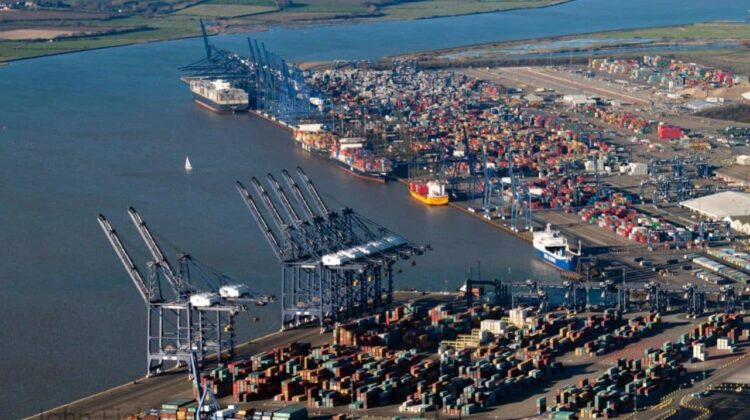
UK ports struggle to stay afloat Post-Brexit trade disruptions
The latest data from Container xChange informs that critical build-ups of containers at UK ports are seen amid the Brexit trade disruption and the ongoing congestion.
Suffered from the burns of the pandemic, the UK’s leading container terminals was unable to cope with the surge of imports last year resulting in lengthy delays for hauliers and vessels and an excess of containers building up in ports.
Adding to the suffering and making the situation much worse was the step taken by the UK of departing the European Union on January 1 and starting trading under a post-Brexit customs and regulatory regime, indicated the latest data from Container xChange.
As per the Container xChange’s Container Availability Index (CAx), an index reading of 0.5 describes a balanced market. Below 0.5 means there is a shortage of containers and above 0.5 means there is an excess of containers.
The average reading of CAx at the port of Felixstowe so far in 2021 for a 40 ft container is 0.95, up from 0.79 in 2020. The CAx for a 20 ft box has increased from an average of 0.78 in 2020 to 0.90 this year.
Painting a similar picture is the port of Southampton with CAx reading for a 40 ft container is 0.86 in 2021, up from an average of 0.71 last year. For a 20 ft container the CAx reading is 0.85, up from an average of 0.72 in 2020.
“The UK’s leading gateway terminals for container traffic suffered congestion for much of 2020 prompting carriers to cut some calls and ship cargo in from European hubs via the Channel Tunnel, ferry services and feeder services instead,”
~ Dr. Johannes Schlingmeier, CEO of Container xChange.
Further adding, Schlingmeier said, “Based on the build-up of containers at ports in 2021, it seems the situation has further deteriorated. We are now seeing critical levels of boxes building up at Southampton and Felixstowe. Post-Brexit cross-Channel shipments are more complicated under dual-Customs regimes and this could be a factor in logistics bottlenecks.”
As per reports, the container lines are making every possible effort to avoid the Brexit disruption and delays at southern terminals by launching new services into the port of Liverpool. However, they are also now coming unstuck, with the port struggling to handle increased volumes. This is reflected in an accelerating excess of containers at the port.
The average CAx reading in 2020 at the port of Liverpool for a 40 ft container was 0.59. In 2021 this has climbed t0 0.75. For a 20 ft container the CAx reading in 2021 is 0.82, up from an average of 0.68 last year.
The European gateway ports have also failed to avoid the disruptions and delays due to pandemic driven container traffic surges. However, they showcase a better balanced container availability at their leading hubs as compared to the UK.
At the port of Rotterdam, the CAx average reading for a 40 ft container this year is 0.51, compared to an average of 0.40 in 2020. At Antwerp, shortages have been a problem, with an average reading for a 40 ft container of 0.21 in 2020 improving to a more balanced 0.41 this year.
Similarly, at Hamburg, the average CAx reading for a 40 ft container in 2020 was 0.27 suggesting critical shortages. This year the average reading has improved to 0.49.
